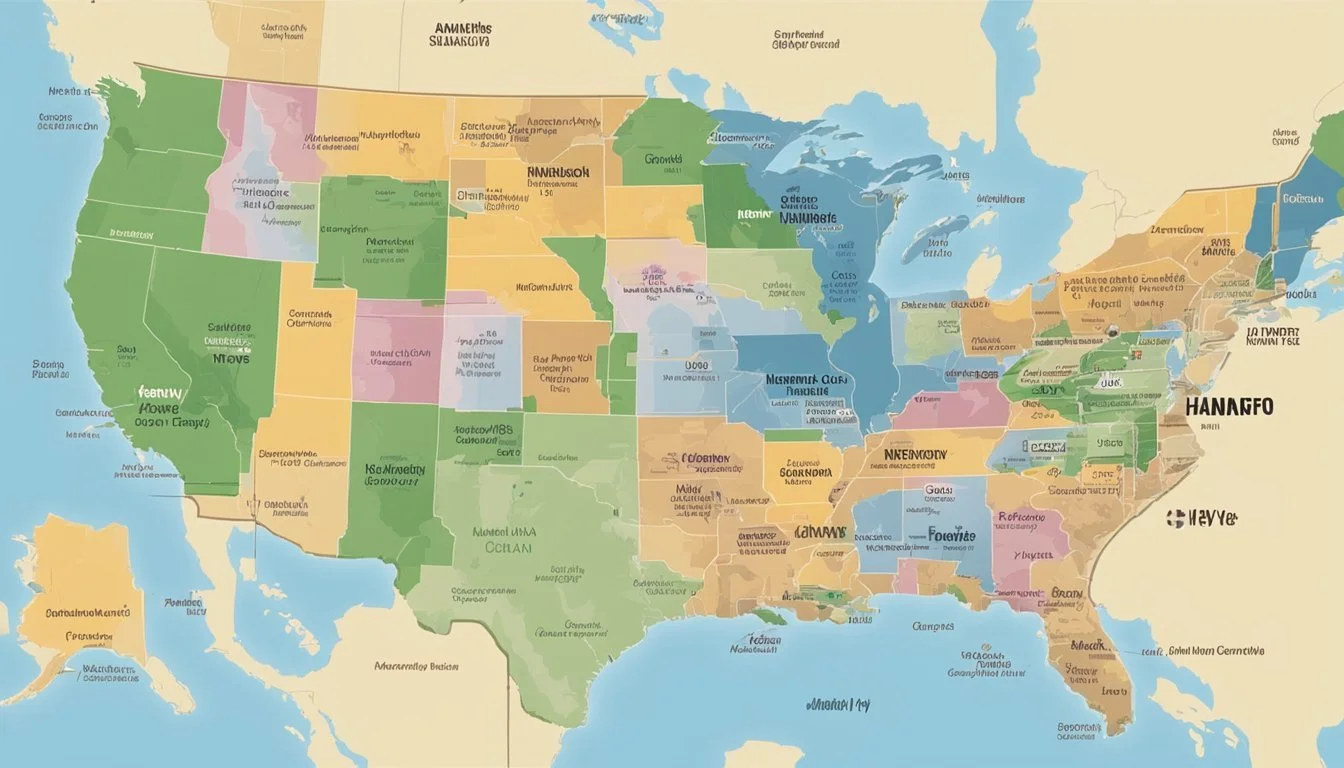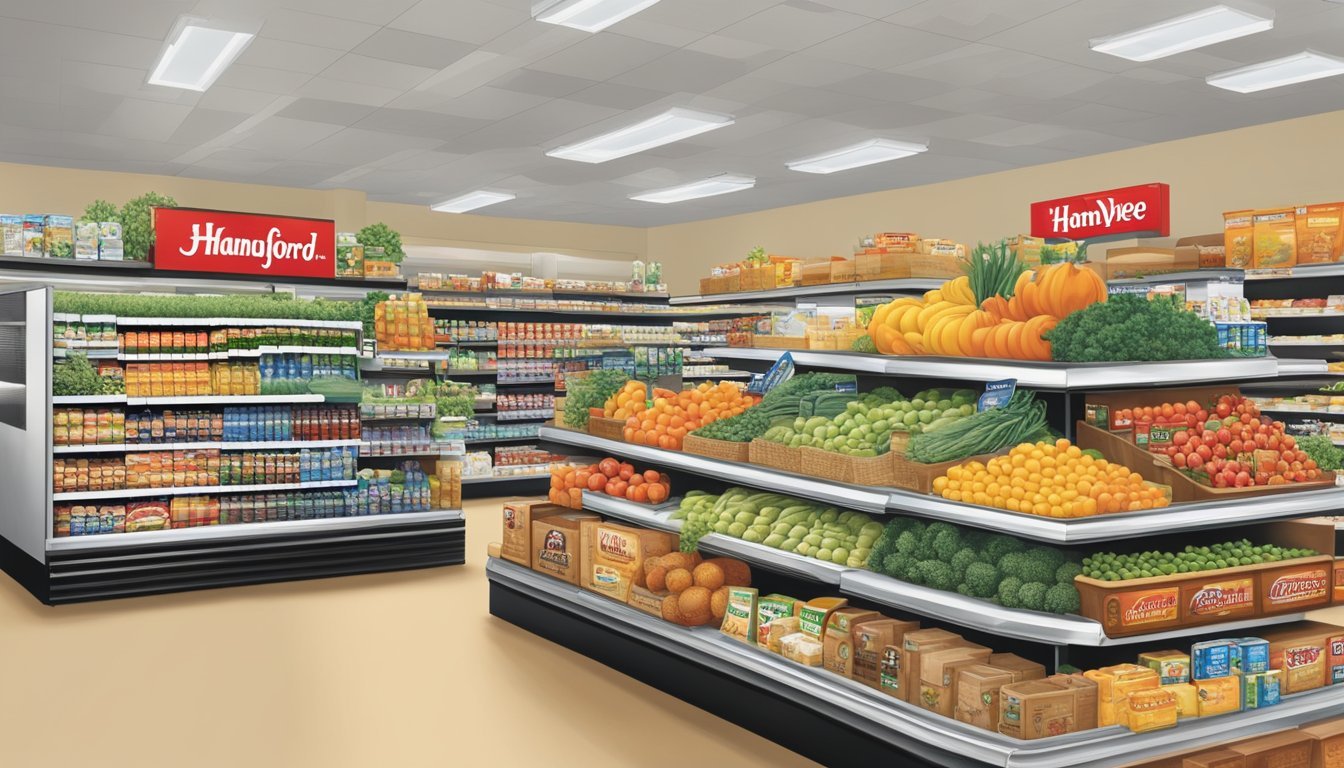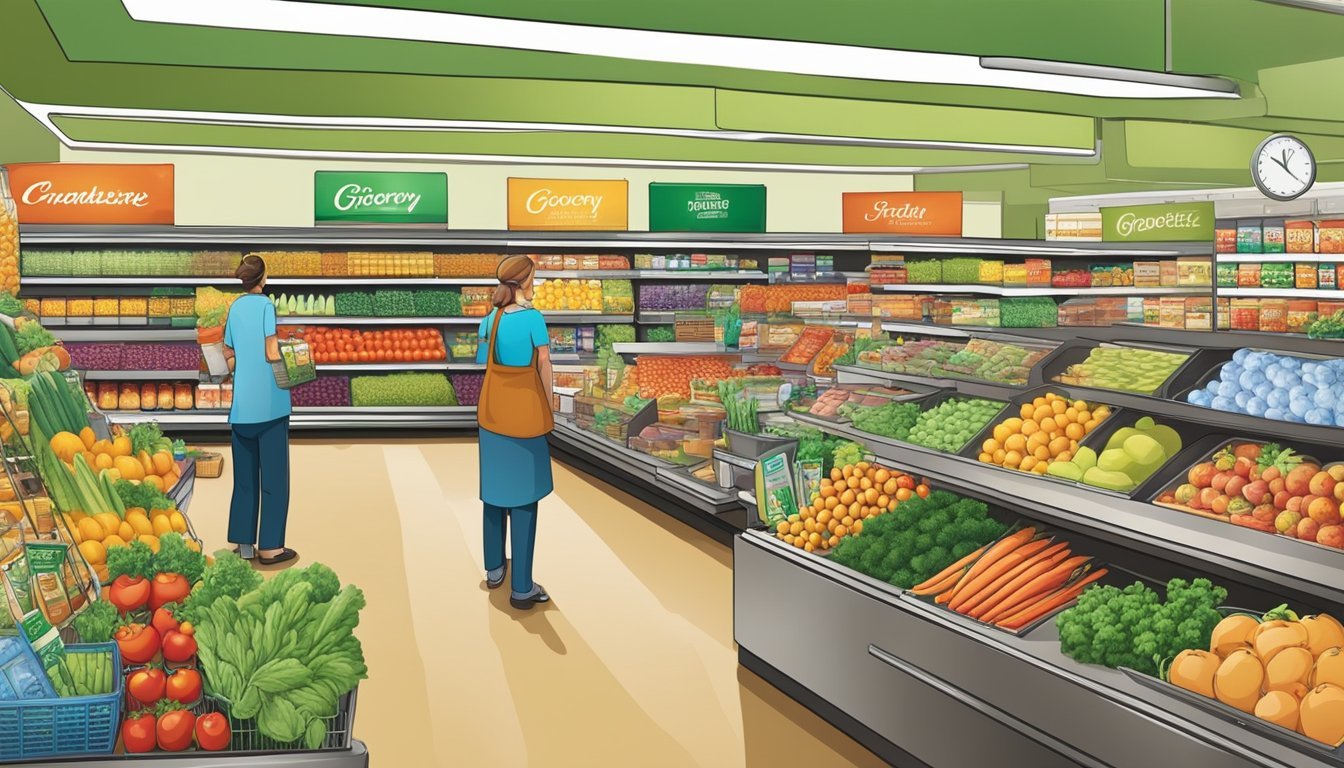Hannaford vs Hy-Vee
A Comprehensive Comparison of Price, Quality, and Service
Hannaford and Hy-Vee are two prominent grocery store chains in America, each with a loyal customer base and unique offerings. These supermarkets have carved out their niches in different regions of the country, providing shoppers with a range of products and services.
Both Hannaford and Hy-Vee are known for their quality offerings, competitive prices, and customer-focused approach, making it difficult to definitively declare one superior to the other. Their strengths often depend on factors such as location, individual store management, and specific customer preferences.
While Hannaford has a strong presence in the Northeast, Hy-Vee primarily serves the Midwest. This regional focus allows each chain to tailor its products and services to local tastes and needs. Shoppers' experiences may vary depending on the specific store they visit within each chain.
Company Backgrounds
Hannaford and Hy-Vee are two prominent grocery chains in America, each with a rich history spanning over a century. Both companies have grown from humble beginnings to become major players in the supermarket industry.
History of Hannaford
Hannaford's roots trace back to 1883 when Arthur Hannaford began selling produce from a cart in Portland, Maine. The business quickly expanded, opening its first grocery store in 1902.
By the 1920s, Hannaford had established itself as a successful wholesale grocery business. The company's retail operations grew steadily throughout the 20th century.
In 1987, Hannaford made a significant move by acquiring 45 Shop 'n Save stores in Maine, New Hampshire, and Vermont. This acquisition greatly expanded their retail presence in the Northeast.
Today, Hannaford operates over 180 stores across five states: Maine, New Hampshire, Vermont, Massachusetts, and New York. The chain is known for its focus on fresh, high-quality products and community involvement.
History of Hy-Vee
Hy-Vee's story began in 1930 when Charles Hyde and David Vredenburg opened a small general store in Beaconsfield, Iowa. The name "Hy-Vee" combines the founders' last names.
The company experienced rapid growth in the 1940s and 1950s, expanding across Iowa and into neighboring states. Hy-Vee was an early adopter of the supermarket concept, offering a wide range of products under one roof.
In 1960, Hy-Vee introduced its employee ownership program, a move that significantly contributed to its success and employee loyalty. This program remains a key part of the company's culture.
Hy-Vee has continued to innovate, introducing in-store dietitians, health clinics, and expanding into non-traditional formats like convenience stores. As of 2024, Hy-Vee operates over 240 stores across eight Midwestern states.
Store Network and Geographic Presence
Hannaford and Hy-Vee operate distinct regional networks in different parts of the United States. Their store locations and expansion strategies reflect their origins and target markets.
Hannaford's Reach
Hannaford, a supermarket chain based in Scarborough, Maine, maintains a strong presence in the northeastern United States. The company operates over 180 stores across five states:
Maine
New Hampshire
Vermont
Massachusetts
New York
Hannaford's stores are particularly concentrated in rural and suburban areas. The chain has deep roots in New England, with a history dating back to 1883.
Hy-Vee's Expansion
Hy-Vee, headquartered in West Des Moines, Iowa, focuses on the Midwestern United States. The company has over 280 stores spread across eight states:
Iowa
Illinois
Kansas
Minnesota
Missouri
Nebraska
South Dakota
Wisconsin
Hy-Vee has been steadily expanding its footprint. The chain is known for its large-format stores and has been introducing new concepts like HealthMarket stores. Hy-Vee's expansion strategy often targets mid-sized cities and suburban areas.
Range of Products and Services
Hannaford and Hy-Vee offer extensive product selections and diverse services to meet customer needs. Both chains prioritize variety and quality across departments, though their specific offerings differ.
Grocery Options at Hannaford
Hannaford provides a wide array of grocery products. Their stores feature fresh produce sections with organic and locally-sourced options. The meat department offers various cuts and prepared items.
Hannaford's bakery produces fresh bread, pastries, and custom cakes. The deli counter provides sliced meats, cheeses, and prepared foods for quick meals. Many locations include pharmacies for customer convenience.
The chain emphasizes natural and organic products throughout the store. Hannaford's private label brands offer value alternatives across categories. Specialty departments like seafood and international foods cater to diverse tastes.
Grocery Options at Hy-Vee
Hy-Vee stores boast expansive product ranges. Their produce departments feature extensive organic selections and seasonal items. The meat and seafood counters offer fresh cuts and ready-to-cook options.
Hy-Vee's in-store bakeries produce artisanal breads, pastries, and custom cakes. Their delis provide hot and cold prepared foods, made-to-order sandwiches, and catering services. Most locations include full-service pharmacies.
The chain excels in specialty departments like gourmet cheese, wine and spirits, and health markets. Hy-Vee's HealthMarket sections offer natural, organic, and dietary-specific products. Many stores feature in-store restaurants, providing additional dining options for customers.
Comparison of Product Quality
Hannaford and Hy-Vee both prioritize product quality, but there are some key differences in their offerings. Let's examine how they compare across major departments.
Fresh Produce
Hannaford emphasizes locally sourced produce when possible, partnering with regional farmers. This results in fresher fruits and vegetables with shorter transit times. Their organic selection is extensive, covering most common produce items.
Hy-Vee also offers a wide variety of fresh produce. They have a strong focus on presentation, with attractively arranged displays. Hy-Vee's produce department often features unique or exotic fruits and vegetables alongside staples.
Both stores maintain high standards for produce quality. Regular rotation ensures items remain fresh. Hannaford may have a slight edge in organic options, while Hy-Vee excels in variety.
Meat and Seafood
Hannaford takes pride in its meat department. They offer a range of USDA Choice and Prime beef cuts. Their seafood is often sourced from local fisheries when in season, ensuring freshness.
Hy-Vee's meat counters are staffed by knowledgeable butchers who can provide custom cuts. They offer a good selection of organic and grass-fed options. Hy-Vee's seafood department typically includes a mix of fresh and frozen items.
Both stores maintain strict quality control for their meat and seafood. Hannaford may have an advantage in local seafood offerings, while Hy-Vee's strength lies in its custom butcher services.
Bakery and Deli
Hannaford's bakery produces a variety of fresh breads and pastries daily. Their deli offers a range of prepared foods and made-to-order sandwiches. The quality is consistent, with an emphasis on traditional favorites.
Hy-Vee's bakery department is often larger, with a wider selection of specialty cakes and artisanal breads. Their deli typically includes a hot food bar and salad bar. Hy-Vee tends to offer more gourmet and international options in both departments.
Both stores maintain high standards for freshness in their bakery and deli offerings. Hy-Vee generally provides more variety and specialty items, while Hannaford focuses on reliable classics.
Pricing Strategies
Hannaford and Hy-Vee employ distinct pricing strategies to attract and retain customers. Both chains focus on offering competitive prices while implementing various methods to provide value.
Everyday Prices
Hannaford aims to maintain consistently low prices on common items. Their "Great Value" program highlights everyday low prices on thousands of products throughout the store. Hy-Vee, on the other hand, tends to have slightly higher regular prices but compensates with frequent sales and promotions.
Hannaford's strategy allows customers to save without relying on weekly deals. This approach appeals to shoppers who prefer predictable pricing. Hy-Vee's regular prices may be higher on some items, but their dynamic pricing model can lead to significant savings for savvy shoppers who time their purchases.
Discounts and Savings
Both chains offer loyalty programs to help customers save. Hannaford's "My Hannaford Rewards" provides personalized deals and cash-back earnings on select items. Hy-Vee's "Fuel Saver + Perks" program offers fuel discounts and exclusive savings.
Hy-Vee frequently runs "loss leader" promotions, selling popular items at or below cost to draw customers. These can include deeply discounted produce or meat specials. Hannaford focuses more on consistent pricing but still offers weekly specials and digital coupons.
Hy-Vee's approach may benefit customers who actively seek out deals and plan their shopping around promotions. Hannaford's strategy caters to those who prefer a more straightforward shopping experience without the need to track multiple sales.
Customer Service and Shopping Experience
Hannaford and Hy-Vee both prioritize customer satisfaction, but their approaches differ. Each store has unique strengths in staff training, store layout, and checkout processes that shape the overall shopping experience.
Staff and Service Quality
Hannaford emphasizes friendly, knowledgeable service. Employees receive extensive product training to assist customers effectively. They're known for being approachable and willing to help locate items or answer questions.
Hy-Vee takes pride in its customer-centric approach. Staff members are often praised for going above and beyond, offering personalized assistance. The company's employee ownership model contributes to high staff engagement and service quality.
Both chains invest in regular customer service training. However, Hy-Vee's broader range of in-store services, including pharmacies and restaurants, requires more diverse staff expertise.
Store Cleanliness and Layout
Hannaford stores are typically clean and well-organized. Aisles are spacious and clearly labeled, making navigation easy. The chain focuses on a straightforward layout that prioritizes efficiency.
Hy-Vee stores often feature more elaborate designs. They're generally clean and well-maintained, with attention to aesthetic details. The layout can be more complex due to additional services, but signage helps guide shoppers.
Both retailers place fresh produce near store entrances. Hannaford opts for a more compact design, while Hy-Vee stores tend to be larger with more varied departments.
Checkout Experience
Hannaford offers traditional checkout lanes and self-checkout options. Lines are usually manageable, and cashiers are trained to be efficient and courteous.
Hy-Vee provides multiple checkout methods, including express lanes for small purchases. Many locations feature advanced technology like scan-and-go systems for a quicker shopping experience.
Both chains strive to minimize wait times. Hy-Vee often has more lanes open during peak hours. Hannaford's smaller store sizes can lead to faster checkout processes overall.
Customer feedback indicates satisfaction with both stores' checkout experiences, though Hy-Vee's wider range of options is frequently highlighted as a convenience factor.
Brand Reputation and Customer Loyalty
Hannaford and Hy-Vee have cultivated distinct brand identities and loyal customer bases in their respective regions. Customer perception and industry recognition play crucial roles in shaping their reputations.
Market Surveys and Consumer Ratings
Hannaford enjoys strong brand recognition in the Northeast. The chain consistently receives high marks for product quality and customer service. A recent consumer survey ranked Hannaford among the top 5 grocers in New England for overall satisfaction.
Hy-Vee has established itself as a trusted Midwest brand. In August 2022, 28% of U.S. grocery shoppers were familiar with Hy-Vee. The company's Fuel Saver + Perks program has proven popular, with many customers citing it as a reason for their loyalty.
Both chains have invested in digital initiatives to enhance customer experience. Hannaford To Go and Hy-Vee's Aisles Online services have seen increased adoption, boosting customer retention.
Industry Rankings and CEO Leadership
Hy-Vee has gained national recognition in industry rankings. The company was listed among America's most trusted grocery retailers, finishing in the top 5 for the Midwest region alongside giants like Walmart and Kroger.
Hannaford's leadership has focused on sustainability initiatives, earning praise from environmental groups. The company's CEO has been vocal about efforts to reduce food waste and promote local sourcing.
Hy-Vee's CEO has spearheaded the company's expansion into new markets and product categories. This strategy has garnered attention from industry analysts, who view it as a bold move in a competitive landscape.
Both chains have received accolades for their community involvement and employee satisfaction, factors that contribute significantly to their brand reputations.
Community and Sustainability Initiatives
Hannaford and Hy-Vee both demonstrate strong commitments to sustainability and community involvement. Hannaford has set an ambitious goal of achieving 100% renewable energy by 2024, focusing heavily on solar power as a key strategy to address climate change.
The company is also working towards becoming the nation's first Living Building certified supermarket, showcasing its dedication to sustainable retail operations. Hannaford's efforts to reduce food waste to zero further highlight its environmental consciousness.
Hy-Vee has made significant strides in ocean conservation. The company became the first Midwest retailer to source 100% of its fresh and frozen seafood from environmentally responsible sources. This initiative aligns with Hy-Vee's broader sustainability mission.
Both retailers prioritize local and organic products:
Hannaford offers a wide range of local and organic options
Hy-Vee emphasizes supporting local farmers and producers
In terms of community engagement, both chains actively participate in:
Food donation programs
Local fundraising events
Educational initiatives promoting healthy living
These efforts reflect the retailers' commitment to fostering strong relationships with the communities they serve while promoting sustainable practices.
Customer-Centric Initiatives
Hannaford and Hy-Vee prioritize customer satisfaction through tailored programs and resources. Both chains aim to enhance the shopping experience and provide added value to consumers.
Loyalty Programs
Hannaford offers My Hannaford Rewards, a digital program that gives customers 2% back on eligible store-brand items. Members receive personalized coupons and exclusive deals via email or the mobile app.
Hy-Vee's Fuel Saver + Perks program allows shoppers to earn points on purchases, redeemable for discounts on gas and groceries. The chain also provides digital coupons and personalized offers through its app.
Both programs are free to join and don't require a physical card, making it convenient for families to save money on everyday purchases.
Educational Resources
Hannaford employs registered dietitians who offer free nutrition classes and one-on-one consultations. The chain provides in-store guidance through its Guiding Stars system, which rates foods based on nutritional value.
Hy-Vee features in-store dietitians and pharmacists who offer health screenings, nutrition advice, and medication consultations. The company's website hosts recipe collections and meal planning tools to help customers make informed food choices.
Both retailers regularly publish blog posts and videos on topics such as healthy eating, meal prep, and seasonal recipes, supporting customers in their wellness journeys.
Comparative Analysis of Store Brands
Both Hannaford and Hy-Vee offer unique store brand products that provide value and quality to their customers. These private label offerings reflect each chain's commitment to meeting local preferences and needs.
Hannaford's Exclusive Offerings
Hannaford's store brand, "Hannaford," encompasses a wide range of products across various categories. Their focus on health-conscious options is evident in their "Nature's Place" line, which features organic and natural foods. Hannaford also offers:
"Taste of Inspirations" premium products
"Hannaford" brand everyday essentials
"Healthy Accents" for personal care items
The chain prioritizes locally sourced items, partnering with regional suppliers to offer products that resonate with New England customers. Hannaford's store brands often provide competitive pricing compared to national brands, without compromising on quality.
Hy-Vee's Unique Products
Hy-Vee's private label offerings cater to diverse customer needs. Their main store brand, "Hy-Vee," covers a broad spectrum of grocery items. Other notable lines include:
"Hy-Vee HealthMarket" for natural and organic products
"Culinary Tours" for gourmet and international foods
"One Step" products that support various charitable causes
Hy-Vee emphasizes Midwestern tastes in their product development. The company has invested in creating unique flavors and products that appeal to their core market. Hy-Vee's store brands often feature innovative items not found in national brands, giving customers more choices.
Technology and Innovation in Retail
Hannaford and Hy-Vee have embraced technology to enhance the shopping experience. Both retailers offer mobile apps for convenient digital coupons and grocery lists.
Hy-Vee has partnered with Google Cloud to improve its online shopping services. This collaboration aims to make Hy-Vee Aisles Online more user-friendly and efficient.
Hannaford provides online ordering with curbside pickup options. Customers can easily browse products and schedule pickups through the company's website.
Hy-Vee has implemented digital solutions from VusionGroup to streamline in-store shopping. These innovations help customers navigate stores more effectively.
Both chains have invested in self-checkout kiosks, reducing wait times at registers. This technology allows shoppers to complete purchases quickly and independently.
Hy-Vee has explored unique concepts like its Hy-Vee HealthMarket, combining grocery items with health and wellness products. This innovative store format caters to health-conscious consumers.
Hannaford has focused on sustainability through technology, implementing energy-efficient systems in its stores. This approach reduces environmental impact while cutting operational costs.
Conclusion
Hannaford and Hy-Vee are both respected grocery chains with distinct strengths. Hannaford excels in its commitment to local products and sustainability initiatives. The company emphasizes fresh produce and organic options.
Hy-Vee stands out for its in-store dining experiences and broader range of non-grocery services. Their stores often feature restaurants, clinics, and other amenities beyond traditional grocery offerings.
Both chains prioritize customer service and community involvement. Hannaford focuses on supporting local farmers and food banks. Hy-Vee is known for its employee stock ownership program and charitable contributions.
Price-wise, the two stores are generally competitive with other major grocery retailers. Specific deals and promotions may vary by location and season.
The better choice ultimately depends on individual preferences and priorities. Shoppers seeking a straightforward grocery experience with an emphasis on local products may prefer Hannaford. Those looking for a one-stop shop with diverse services might lean towards Hy-Vee.
Both Hannaford and Hy-Vee have loyal customer bases in their respective regions. Each chain continues to adapt to changing consumer needs and industry trends.













